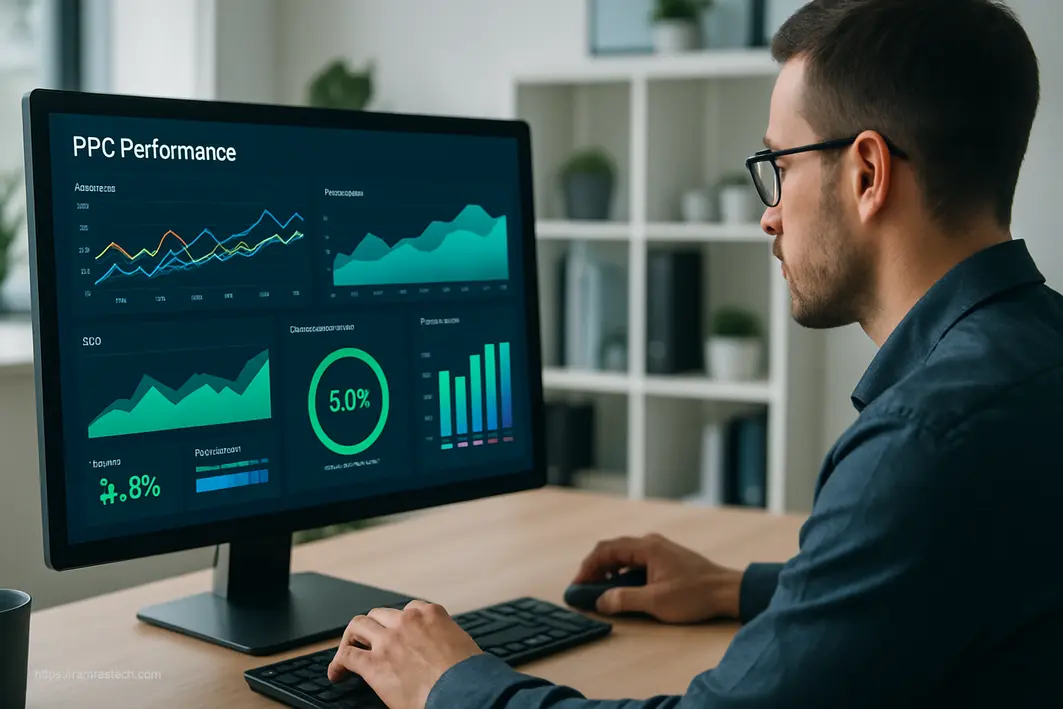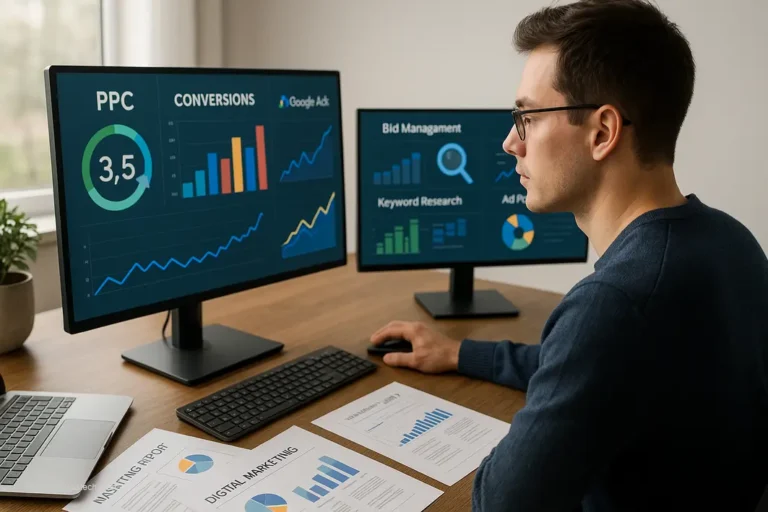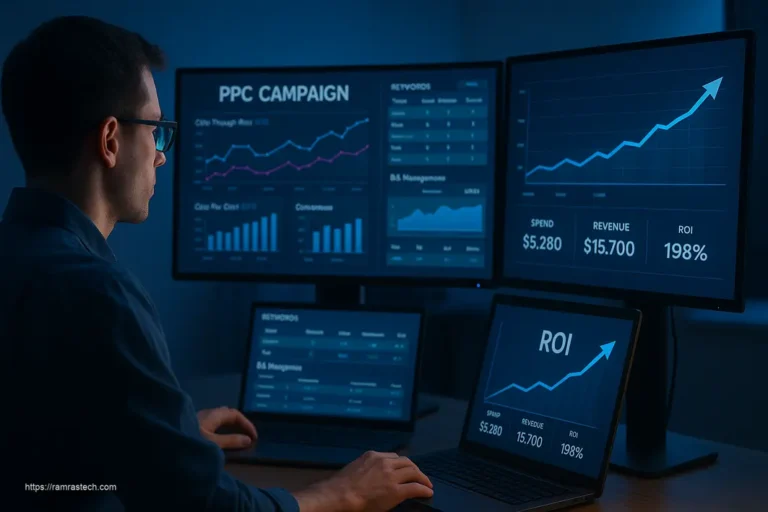How to Master PPC Performance with 8 Simple Tactics

Have you ever wondered why some businesses get incredible results from their PPC campaigns while others struggle to break even? The difference often comes down to how well they understand and optimize their PPC performance.
Whether you’re just starting with paid advertising or looking to refine your existing strategies, mastering PPC performance is essential for stretching your marketing dollars further and generating more leads and sales.
In today’s competitive digital landscape, simply running ads isn’t enough. You need a systematic approach to continually improve your PPC performance, ensuring every dollar spent works harder for your business. Let’s dive into the strategies that can transform your campaigns from money pits to profit generators.
Understanding PPC Performance: More Than Just Clicks and Impressions
PPC performance is about much more than vanity metrics like impressions or even click volume. At its core, it measures how effectively your campaigns achieve business objectives relative to your investment.
Think of PPC performance as your campaign’s vital signs. Just as a doctor monitors multiple health indicators, successful PPC managers track various metrics to gauge campaign health:
- Click-Through Rate (CTR): The percentage of people who click your ad after seeing it
- Conversion Rate: How many clicks turn into meaningful actions (purchases, sign-ups, etc.)
- Cost Per Click (CPC): The average amount you pay for each click
- Cost Per Acquisition (CPA): What you pay, on average, to acquire a customer
- Return on Ad Spend (ROAS): Revenue generated for every dollar spent on ads
- Quality Score: Google’s rating of your ads and landing pages
Why does optimizing these metrics matter so much? Because underperforming PPC campaigns can quickly become expensive disappointments. When properly optimized, however, they become powerful engines for business growth, helping you acquire customers more efficiently than your competitors.
Let’s explore the eight essential tactics that will elevate your PPC performance to new heights.
Tactic 1: Strategic Keyword Research and Management
The foundation of exceptional PPC performance starts with selecting the right keywords. These digital signposts determine when your ads appear and who sees them.
Finding High-Value Keywords
Begin by identifying search terms your ideal customers actually use. Tools like Google Keyword Planner, SEMrush, KeywordMe, and Ahrefs can reveal:
- Search volume: How many people search for the term monthly
- Competition level: How many advertisers target the same term
- Cost estimates: What you might pay per click
- Related terms: Additional keywords you might not have considered
But volume alone can be misleading. A keyword with 10,000 monthly searches might seem attractive, but if it’s too general or has ambiguous intent, those clicks might not convert to customers.
For example, someone searching “PPC software” could be looking for a job in PPC, researching what PPC is, or genuinely looking for software to manage campaigns. More specific terms like “enterprise PPC management platform” or “small business PPC automation tools” show clearer purchase intent.
Organizing Keywords Effectively
Once you’ve gathered promising keywords, organize them into tightly themed ad groups. This structure allows you to:
- Create highly relevant ad copy that speaks directly to the search
- Develop targeted landing pages that match searcher intent
- Test and optimize performance at a granular level
For example, rather than lumping all “PPC software” related keywords into one group, create separate groups for:
- Budget PPC solutions
- Enterprise-level PPC platforms
- Industry-specific PPC tools
Implementing Negative Keywords
Equally important is identifying what you don’t want to pay for. Negative keywords prevent your ads from showing for irrelevant searches, preserving your budget for valuable clicks.
For instance, if you sell enterprise PPC software, you might add negatives like:
- “free”
- “download”
- “cracked”
- “jobs”
- “career”
Regularly review your Search Terms report to identify irrelevant searches triggering your ads, then add them as negatives. This ongoing refinement can improve PPC performance by up to 30% in some cases, simply by eliminating wasted spend.
Tactic 2: Crafting Compelling Ad Copy That Converts
Even the most precise keyword targeting falls flat without persuasive ad copy. Your ad text isn’t just about getting clicks—it’s about attracting the right clicks from people most likely to convert.
The Anatomy of High-Performing Ad Copy
Effective PPC ads typically include:
- Attention-grabbing headlines that incorporate the search term
- Unique selling propositions that differentiate your offering
- Social proof elements (when possible) like ratings or customer counts
- Clear calls-to-action that tell users what to do next
- Benefit-focused descriptions that address pain points
According to a Stape analysis, ads that incorporate all these elements see CTRs up to 2-3 times higher than those missing key components.
Testing Ad Variables Systematically
Never settle for your first draft. Implement a rigorous testing program:
- Create multiple versions of headlines, descriptions, and CTAs
- Test one variable at a time for clear results
- Give tests enough traffic to reach statistical significance
- Implement winners and start new tests
For example, you might test:
- Headline A: “Enterprise PPC Software: 30% Better ROI”
- Headline B: “#1 Rated PPC Platform for Enterprises”
After determining the winner, maintain it while testing description variations.
Leveraging Responsive Search Ads
Google’s Responsive Search Ads (RSAs) allow you to provide multiple headlines and descriptions that Google automatically combines and tests. This machine learning approach can identify winning combinations faster than manual testing.
When creating RSAs:
- Provide at least 8-10 diverse headlines
- Include 3-4 description variations
- Ensure each component can work with any other
- Pin crucial elements that must appear in specific positions
As MonsterInsights explains, properly optimized RSAs can improve CTRs by 5-15% compared to standard expanded text ads.
Tactic 3: Landing Page Optimization for Maximum Conversions
Even the best ads will underperform if they lead to poor landing pages. The post-click experience is crucial for turning expensive clicks into valuable conversions.
Alignment with Ad Messaging
Your landing page should deliver exactly what your ad promised. This message match builds trust and reduces bounce rates. If your ad offers a “Free PPC Performance Assessment,” your landing page headline should echo this offer, not switch to a generic company overview.
Conversion-Focused Design Elements
High-converting landing pages typically include:
- Clear, benefit-focused headlines above the fold
- Concise, scannable copy with bullet points and short paragraphs
- Trust signals like testimonials, case studies, or client logos
- Minimal navigation to prevent distractions
- Strong, contrasting call-to-action buttons
- Fast load times (under 3 seconds)
- Mobile optimization for all device types
According to Improvado, improving landing page experience can boost conversion rates by 25-75% in many cases—often the quickest way to improve overall campaign performance.
Testing Landing Page Variables
Just like ad copy, landing pages should be continuously tested:
- A/B test page layouts: Single-column vs. two-column designs
- Test form length: Shorter forms typically increase conversion volume; longer forms may increase lead quality
- Experiment with media: Video vs. static images vs. interactive elements
- Try different CTAs: Button color, size, text, and positioning
One particularly effective approach is to create dedicated landing pages for different customer segments or campaign themes. A Knotsync study found that segment-specific landing pages convert 40% better than generic ones.
Tactic 4: Advanced Audience Targeting Strategies
Who sees your ads matters as much as what they see. Advanced audience targeting ensures your ads reach people most likely to become customers.
Moving Beyond Basic Demographics
While age, gender, location, and device targeting provide a foundation, sophisticated PPC performance optimization requires deeper audience segmentation:
- In-market audiences: People actively researching products in your category
- Affinity audiences: Users with established interests related to your offering
- Custom intent audiences: Created based on websites visited and searches performed
- Similar audiences: People who resemble your best customers
- Customer match: Targeting existing contacts for upsells or reengagement
Audience Layering for Precision
Rather than choosing between keyword and audience targeting, combine them for maximum impact. For example:
- Target broad keywords with strict audience parameters
- Use different bid adjustments for various audience segments
- Create separate campaigns for different audience types with tailored messaging
According to BrightBid, advertisers using audience layering techniques see up to 33% higher conversion rates and 22% lower CPAs.
RLSA: Remarketing Lists for Search Ads
One particularly powerful approach combines search intent with prior website engagement. RLSA lets you customize bids and ads for past visitors when they search for relevant terms.
For instance, you might:
- Bid more aggressively for previous visitors who didn’t convert
- Show special offers to cart abandoners
- Use different messaging for visitors who viewed specific product categories
- Exclude current customers from acquisition campaigns
Tactic 5: Smart Bid Management and Budget Allocation
How you manage bids and allocate budget directly impacts your PPC performance. This isn’t just about how much you spend, but how strategically you spend it.
Understanding Bidding Strategy Options
Modern PPC platforms offer various bidding strategies:
- Manual CPC: You set each bid yourself
- Enhanced CPC: Automated adjustments to your manual bids
- Target CPA: Automated bidding to achieve a specific cost per acquisition
- Target ROAS: Bidding to achieve a target return on ad spend
- Maximize Conversions: Aiming for the most conversions within budget
- Maximize Conversion Value: Prioritizing high-value conversions
Each has its place depending on your goals, data history, and budget. For new campaigns with limited conversion data, manual or enhanced CPC often works best. As you gather more data, automated strategies like Target CPA become more effective.
Budget Distribution Based on Performance
Not all campaigns deserve equal budget. Allocate funds based on:
- Historical performance data
- Profit margins by product/service
- Seasonality and market trends
- Customer lifetime value by segment
Click Patrol recommends a “70/20/10” approach:
- 70% to proven performers
- 20% to promising campaigns needing more data
- 10% to experimental campaigns testing new approaches
This balanced investment preserves performance while allowing for innovation.
Dayparting and Geographic Bid Adjustments
Performance often varies by time and location. Use bid adjustments to:
- Increase bids during high-conversion hours
- Decrease bids during low-performing times
- Bid more aggressively in high-value locations
- Reduce exposure in underperforming regions
For example, if analysis shows conversions are 40% more likely between 6-9 PM on weekdays, you might increase bids by 30% during those hours while reducing overnight bids by 20%.
Tactic 6: Robust Analytics and Conversion Tracking
You can’t improve what you don’t measure. Comprehensive tracking and analytics form the backbone of PPC performance optimization.
Setting Up Proper Conversion Tracking
Beyond basic click data, you need visibility into what happens after the click:
- Primary conversions: Purchases, form submissions, calls
- Micro-conversions: Email signups, content downloads, video views
- Engagement metrics: Time on site, pages per session, return visits
- Revenue data: Transaction values, margin information when possible
According to Adspert, campaigns with complete conversion tracking see performance improvements of 35-50% compared to those tracking clicks alone.
Using Google Analytics for Deeper Insights
While platform-specific analytics (Google Ads, Bing Ads) provide valuable data, connecting your campaigns to Google Analytics reveals deeper insights:
- Behavior flow: How users navigate your site post-click
- Assisted conversions: Understanding multi-touch attribution
- Site speed metrics: Identifying technical barriers to conversion
- Audience overlap: Discovering connections between customer segments
- Cohort analysis: How different user groups behave over time
Our article on Google Analytics provides a complete guide to setting up proper tracking.
Attribution Modeling for Accurate Performance Assessment
Default ‘last-click’ attribution often gives an incomplete picture of campaign value. Consider alternative models:
- First-click: Giving full credit to the first touchpoint
- Linear: Distributing credit equally across all touchpoints
- Time decay: Giving more credit to touches closer to conversion
- Position-based: Emphasizing first and last touches
- Data-driven: Using machine learning to assign credit
Different models may reveal that certain campaigns play crucial roles in starting or nurturing the customer journey, even if they don’t directly generate conversions.
Tactic 7: Leveraging Ad Extensions and Platform Features
Ad extensions and platform-specific features can dramatically improve visibility, engagement, and ultimately, PPC performance—often with minimal additional effort or cost.
Essential Ad Extensions for Every Campaign
Ad extensions expand your ad’s real estate and provide additional information to potential customers:
- Sitelink extensions: Additional links to specific pages
- Callout extensions: Highlighting key selling points
- Structured snippet extensions: Showcasing categories, services, or brands
- Call extensions: Adding phone numbers for direct contact
- Location extensions: Displaying your business address
- Price extensions: Showing pricing information
- Promotion extensions: Featuring special offers and discounts
According to our research on ad extensions, properly implemented extensions can improve CTR by 10-15% while also boosting Quality Score and lowering CPC.
Platform-Specific Opportunities
Each ad platform offers unique features worth exploring:
Google Ads:
- Discovery campaigns for reaching users across Google’s properties
- Performance Max campaigns leveraging Google’s AI across channels
- Smart Shopping campaigns for ecommerce businesses
Microsoft Advertising:
- LinkedIn Profile targeting for B2B campaigns
- Microsoft Audience Network for native placements
- Action extensions with customizable CTA buttons
Facebook/Instagram:
- Advanced creative formats like Collection ads
- Catalog-based dynamic product ads
- Automated creative optimization
Staying Current with Platform Updates
Ad platforms constantly evolve with new features and capabilities. Establishing a system to stay updated is crucial:
- Subscribe to official platform blogs and announcements
- Join PPC-focused communities and forums
- Follow industry publications and thought leaders
- Schedule regular platform training for your team
Advertisers who quickly adopt new features often gain competitive advantages before these capabilities become widely used. For instance, Mayple reports that early adopters of Google’s Performance Max campaigns saw 12% higher conversion rates than those who waited.
Tactic 8: Continuous Testing and Optimization Framework
The difference between good and great PPC performance often comes down to having a systematic approach to testing and improvement. One-off optimizations help, but a continuous framework delivers compounding results.
Creating a Structured Testing Calendar
Develop a testing schedule that coordinates:
- What elements to test (keywords, ads, landing pages, audiences)
- How long each test will run (based on traffic volume)
- Success metrics for each test
- Implementation plan for winners
For example, your quarterly calendar might include:
- Week 1-2: Landing page headline tests
- Week 3-4: Ad copy variations
- Week 5-6: CTA button experiments
- Week 7-8: Audience targeting refinements
Test Types Beyond Basic A/B Testing
While simple A/B tests form the foundation, consider advanced testing approaches:
- Multivariate testing: Testing multiple variables simultaneously
- Bandit testing: Dynamically allocating traffic to better-performing variations
- Sequential testing: Building on previous test results
- Segmented testing: Running different tests for different audience segments
Documentation and Knowledge Building
Document all tests, including:
- Hypothesis: What you expected and why
- Methodology: How you conducted the test
- Results: What happened (with statistical significance)
- Insights: What you learned beyond the immediate result
- Next steps: How findings will inform future tests
This documentation creates an invaluable knowledge base that prevents repeating unsuccessful tests and helps identify patterns across campaigns.
Putting It All Together: Your PPC Performance Optimization Roadmap
Implementing all eight tactics might seem overwhelming, but you don’t need to do everything at once. Here’s a practical approach to elevating your PPC performance:
Phase 1: Foundation (Weeks 1-4)
- Audit current campaigns and establish baseline metrics
- Implement proper tracking and analytics
- Organize keywords into tightly themed groups
- Add all relevant ad extensions
Phase 2: Refinement (Weeks 5-8)
- Develop and test multiple ad variations
- Optimize landing pages for conversion
- Implement audience targeting layers
- Review and adjust bidding strategies
Phase 3: Advanced Optimization (Months 3-6)
- Develop sophisticated testing framework
- Explore platform-specific features
- Implement attribution modeling
- Create segment-specific strategies
By following this methodical approach, you’ll build a PPC system that continuously improves rather than one that requires periodic overhauls.
Frequently Asked Questions About PPC Performance
What’s the fastest way to improve poor PPC performance?
If your campaigns are underperforming, first check these common issues:
- Misaligned keywords and ad copy
- Poor landing page experience
- Missing negative keywords
- Inadequate conversion tracking
- Improper audience targeting
Fixing these fundamentals often yields immediate improvement. For most advertisers, implementing negative keywords and improving landing page experience deliver the quickest wins, sometimes improving performance by 20-30% within days.
How often should I optimize my PPC campaigns?
The optimal frequency depends on traffic volume and campaign maturity:
- High-traffic campaigns (1000+ clicks/day): Daily or every other day
- Medium-traffic campaigns (300-1000 clicks/day): Weekly
- Low-traffic campaigns (fewer than 300 clicks/day): Bi-weekly
However, avoid making too many changes simultaneously, which makes it difficult to determine what’s working. Instead, prioritize optimizations based on potential impact.
What’s a good benchmark for PPC performance metrics?
While benchmarks vary dramatically by industry and campaign type, here are general targets for search campaigns:
- CTR: 3-5% or higher
- Conversion rate: 3-10%
- CPA: 10-30% of customer lifetime value
- ROAS: 300-800%
- Quality Score: 7+
Rather than focusing exclusively on industry benchmarks, track improvements against your own historical performance for more relevant comparisons.
How do I know if my agency or team is optimizing PPC effectively?
Look for these signs of proper optimization:
- Regular, documented testing
- Transparent reporting on key metrics
- Proactive communication about strategy changes
- Continuous improvement in core KPIs
- Ability to explain performance changes
- Regular implementation of new platform features
If your team falls short in these areas, it may be time to consider additional digital marketing strategies or explore new partnerships.
Conclusion: The Compounding Power of PPC Performance Optimization
PPC performance optimization isn’t a one-time event but an ongoing process. The eight tactics outlined here—from keyword refinement to continuous testing—work together to create a system that generates increasingly better results over time.
The most successful PPC advertisers don’t just chase quick wins; they build methodical processes that deliver compounding returns. By implementing these strategies consistently, you’ll develop campaigns that not only improve incrementally but gain competitive advantages that become difficult for competitors to overcome.
Remember that optimization is both art and science. While data drives decisions, creativity and intuition play important roles in developing hypotheses and interpreting results. The most effective PPC managers blend analytical thinking with creative insight.
Start implementing these tactics today, and you’ll not only see immediate improvements in your PPC performance, but you’ll establish a foundation for sustainable growth in your digital marketing efforts.






